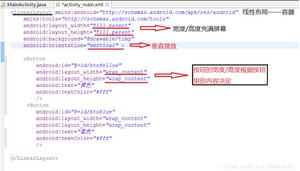Jackson之注解大全

文章目录
Jackson简介
特点
POM
Jackson常用注解
1. 序列化注解
1.1 @JsonAnyGetter
1.2 @JsonGetter
1.3 @JsonPropertyOrder
1.4 @JsonRawValue
1.5 @JsonValue
1.6 @JsonRootName
1.7 @JsonSerialize
2 反序列化注解
2.1 @JsonCreator
2.2 @JacksonInject
2.3 @JsonAnySetter
2.4 @JsonSetter
2.5 @JsonDeserialize
2.6 @JsonAlias
3 属性包含注解
3.1 @JsonIgnoreProperties
3.2 @JsonIgnore
3.3 @JsonIgnoreType
3.4 @JsonInclude
3.5 @JsonAutoDetect
4 常用注解
4.1 @JsonProperty
4.2 @JsonFormat
4.3 @JsonUnwrapped
4.4 @JsonView
4.5 @JsonManagedReference, @JsonBackReference
4.6 @JsonIdentityInfo
4.7 @JsonFilter
5 其他注解
5.1 @JsonAppend
5.2 @JsonNaming
5.3 @JsonPropertyDescription
5.4 @JsonPOJOBuilder
5.5 @JsonTypeId
6 禁用Jackson注解
注解混合
Jackson简介
Jackson是一个简单的基于Java的应用库,可以轻松的将Java对象转换为json对象和xml文档,同样也可以将json、xml转换为Java对象。Jackson依赖的jar包较少,简单易用性能高,社区活跃,更新速度快。
特点
容易使用,提供了高层次外观,简化常用的用例。
无需创建映射,API提供了默认的映射大部分对象序列化。
性能高,快速,低内存占用
创建干净的json
不依赖其他库
代码开源
POM
<!-- https://mvnrepository.com/artifact/com.fasterxml.jackson.core/ -->
<dependency>
<groupId>com.fasterxml.jackson.core</groupId>
<artifactId>jackson-core</artifactId>
<version>2.9.9</version>
</dependency>
<dependency>
<groupId>com.fasterxml.jackson.core</groupId>
<artifactId>jackson-databind</artifactId>
<version>2.9.9.3</version>
</dependency>
<dependency>
<groupId>com.fasterxml.jackson.core</groupId>
<artifactId>jackson-annotations</artifactId>
<version>2.9.9</version>
</dependency>
<!-- 支持xml格式 -->
<dependency>
<groupId>com.fasterxml.jackson.dataformat</groupId>
<artifactId>jackson-dataformat-xml</artifactId>
<version>2.9.9</version>
</dependency>
Jackson常用注解
【翻译】https://www.baeldung.com/jackson-annotations
https://www.baeldung.com/jackson-advanced-annotations
1. 序列化注解
1.1 @JsonAnyGetter
返回目录
该注解用于把可变的Map类型属性当做标准属性。
下例中,ExtendableBean实体有一个name属性和一组kay/value格式的可扩展属性:
class ExtendableBean {
public String name;
public Map<String, String> properties;
@JsonAnyGetter
public Map<String, String> getProperties() {
return properties;
}
public ExtendableBean(String name) {
this.name = name;
properties = new HashMap<>();
}
public void add(String key, String value){
properties.put(key, value);
}
}
说明: name属性访问级别是public, 是为了省略get/set方法, 简化示例
下面是把ExtendableBean实体序列化的过程:
private static void whenSerializingUsingJsonAnyGetter_thenCorrect(){
ExtendableBean bean = new ExtendableBean("My bean");
bean.add("attr1", "val1");
bean.add("attr2", "val2");
String result = null;
try {
result = new ObjectMapper().writeValueAsString(bean);
} catch (JsonProcessingException e) {
e.printStackTrace();
}
System.out.println(result);
}
序列化后的结果: {"name":"My bean","attr2":"val2","attr1":"val1"}
1.2 @JsonGetter
返回目录
该注解是@JsonProperty的两个作用中的一个, 用来标记一个方法是getter方法
下例中, 指定方法getTheName()是属性name属性的getter方法
public class MyBean {
public int id;
private String name;
@JsonGetter("name")
public String getTheName() {
return name;
}
}
下面是序列化过程:
public void whenSerializingUsingJsonGetter_thenCorrect()
throws JsonProcessingException {
MyBean bean = new MyBean(1, "My bean");
String result = new ObjectMapper().writeValueAsString(bean);
}
1.3 @JsonPropertyOrder
返回目录
该注解可以指定实体属性序列化后的顺序
@JsonPropertyOrder({ "name", "id" })
public class MyBean {
public int id;
public String name;
}
序列化后的结果:{ "name":"My bean", "id":1}
该注解有一个参数alphabetic, 如果为true, 表示按字母顺序序列化,此时输出结果:{ "id":1, "name":"My bean"}
1.4 @JsonRawValue
返回目录
该注解可以让Jackson在序列化时把属性的值原样输出
下面的例子中, 我们给实体属性attrs赋值一个json字符串
public class RawBean {
public String name;
@JsonRawValue
public String attrs;
}
public void whenSerializingUsingJsonRawValue_thenCorrect()
throws JsonProcessingException {
RawBean bean = new RawBean("My bean", "{"attr":false}");
String result = new ObjectMapper().writeValueAsString(bean);
}
输出结果是: {"name":"Mybean","attrs":{"attr":false}}
1.5 @JsonValue
返回目录
该注解作用于一个方法, 并且只用被注解的方法序列化整个实体对象
把1.1的实体例修改如下:
class ExtendableBean {
...........
//把注解换成JsonValue
@JsonValue
public Map<String, String> getProperties() {
return properties;
}
..........
}
序列化过程不变, 则结果是: {"attr2":"val2","attr1":"val1"}
可见, 属性name没有被序列化
1.6 @JsonRootName
返回目录
如果wrapping是使能(enabled), 那么该注解用来指定root wrapper的名称
wrapping(包装)的含义是如果序列化实体User的结果是
{
"id": 1,
"name": "John"
}
那么wrapping后的效果如下:
{
"User": {
"id": 1,
"name": "John"
}
}
下面看一个例子, 我们用该注解指明包装实体(wrapper entity)的包装器名称:
@JsonRootName(value = "user")
public class UserWithRoot {
public int id;
public String name;
}
包装器默认名称是实体类名, 这里就是UserWithRoot, 但是注解的value属性把包装器名称改为了user
序列化过程(和前面不同, 需要使能包装器)
private static void whenSerializingUsingJsonRootName_thenCorrect(){
UserWithRoot user = new UserWithRoot();
user.id = 1;
user.name = "jackma";
try {
ObjectMapper objectMapper = new ObjectMapper();
objectMapper.enable(SerializationFeature.WRAP_ROOT_VALUE);
String result = objectMapper.writeValueAsString(user);
System.out.println(result);
} catch (JsonProcessingException e) {
e.printStackTrace();
}
}
序列化的结果:{"user":{"id":1,"name":"jackma"}}
从Jackson .2.4版本开始, 新增了一个可选参数namespace, 该属性对json没效果, 但是对xml起作用, 修改本例的实体例:
@JsonRootName(value = "user", namespace = "alibaba")
class UserWithRoot {
public int id;
public String name;
}
用XmlMapper序列化:
private static void whenSerializingUsingJsonRootName_thenCorrect(){
..............
XmlMapper xmlMapper = new XmlMapper();
xmlMapper.enable(SerializationFeature.WRAP_ROOT_VALUE);
..............
序列化结果:
<user xmlns="alibaba">
<id xmlns="">1</id>
<name xmlns="">jackma</name>
</user>
1.7 @JsonSerialize
返回目录
该注解用于指定一个自定义序列化器(custom serializer)来序列化实体例的某属性
下例中, 用@JsonSerialize的参数using指明实体类属性eventDate的序列化器是CustomDateSerializer类:
public class Event {
public String name;
@JsonSerialize(using = CustomDateSerializer.class)
public Date eventDate;
}
下面是类CustomDateSerializer的定义:
public class CustomDateSerializer extends StdSerializer<Date> {
private static SimpleDateFormat formatter = new SimpleDateFormat("dd-MM-yyyy hh:mm:ss");
public CustomDateSerializer() { this(null); }
public CustomDateSerializer(Class<Date> t) { super(t); }
@Override
public void serialize(Date value, JsonGenerator gen, SerializerProvider arg2)
throws IOException, JsonProcessingException {
gen.writeString(formatter.format(value));
}
}
序列化:
public void whenSerializingUsingJsonSerialize_thenCorrect(){
SimpleDateFormat df = new SimpleDateFormat("yyyy/MM/DD hh:mm:ss");
String toParse = "2019/08/19 16:28:00";
Date date = null;
try {
date = df.parse(toParse);
} catch (ParseException e) {
e.printStackTrace();
}
Event event = new Event();
event.name = "party";
event.eventDate = date;
try {
String result = new ObjectMapper().writeValueAsString(event);
System.out.println(result);
} catch (JsonProcessingException e) {
e.printStackTrace();
}
}
序列化结果: {"name":"party","eventDate":"2019-08-19 04:28:00"}
而如果没有@JsonSerialize注解的序列化结果是: {"name":"party","eventDate":1566203280000}
2 反序列化注解
2.1 @JsonCreator
返回目录
该注解可以调整反序列化时构造器/构造工厂的行为
当我们需要反序列化的Json字符串和目标实体类不完全匹配时, 这个注解非常有用
假设我们要反序列化下面的Json字符串:
{
"id":1,
"theName":"My bean"
}
但是, 我们的目标实体类并没有一个名为theName的属性. 现在, 我们不想改变实体类本身, 我们只需在数据导出时做一些控制, 方法就是在构造器中使用@JsonCreator和@JsonProperty注解:
public class BeanWithCreator {
public int id;
public String name;
@JsonCreator
public BeanWithCreator(
@JsonProperty("id") int id,
@JsonProperty("theName") String name) {
this.id = id;
this.name = name;
}
}
反序列化过程:
public void whenDeserializingUsingJsonCreator_thenCorrect() throws IOException {
String json = "{"id":1,"theName":"My bean"}";
BeanWithCreator bean = new ObjectMapper().readerFor(BeanWithCreator.class).readValue(json);
assertEquals("My bean", bean.name);
}
2.2 @JacksonInject
返回目录
该注解指明一个属性的值是通过注入得到而不是从Json字符串反序列得到
下例的实体例属性id的值用注解标明是注入值:
public class BeanWithInject {
@JacksonInject
public int id;
public String name;
}
反序列化过程:
public void whenDeserializingUsingJsonInject_thenCorrect() throws IOException {
String json = "{"name":"My bean"}";
InjectableValues inject = new InjectableValues.Std().addValue(int.class, 1);
BeanWithInject bean = new ObjectMapper().reader(inject).forType(BeanWithInject.class).readValue(json);
assertEquals("My bean", bean.name);
assertEquals(1, bean.id);
}
2.3 @JsonAnySetter
返回目录
该注解允许我们把一个可变的map属性作为标准属性, 在反序列过程中, 从Json字符串得到的属性值会加入到map属性中
实体例和注解:
public class ExtendableBean {
public String name;
private Map<String, String> properties;
@JsonAnySetter
public void add(String key, String value) {
properties.put(key, value);
}
}
准备反序列化的Json字符串:
{
"name":"My bean",
"attr2":"val2",
"attr1":"val1"
}
反序列化过程:
public void whenDeserializingUsingJsonAnySetter_thenCorrect() throws IOException {
String json = "{"name":"My bean","attr2":"val2","attr1":"val1"}";
ExtendableBean bean = new ObjectMapper().readerFor(ExtendableBean.class).readValue(json);
assertEquals("My bean", bean.name);
assertEquals("val2", bean.getProperties().get("attr2"));
}
2.4 @JsonSetter
返回目录
该注解是@JsonProperty的另一个作用, 和@JsonGetter相对, 标记一个方法是setter方法
如果目标实体类没有和Json字符串数据完全匹配的方法时, 我们可以通过这个注解做一些调整让他们匹配
下例中指定方法setTheName()作为name属性的setter方法
public class MyBean {
public int id;
private String name;
@JsonSetter("name")
public void setTheName(String name) {
this.name = name;
}
}
反序列化过程:
public void whenDeserializingUsingJsonSetter_thenCorrect() throws IOException {
String json = "{"id":1,"name":"My bean"}";
MyBean bean = new ObjectMapper().readerFor(MyBean.class).readValue(json);
assertEquals("My bean", bean.getTheName());
}
2.5 @JsonDeserialize
返回目录
该注解标明使用自定义反序列化器(custom deserializer)
实体类:
public class Event {
public String name;
@JsonDeserialize(using = CustomDateDeserializer.class)
public Date eventDate;
}
自定义反序列化器:
public class CustomDateDeserializer extends StdDeserializer<Date> {
private static SimpleDateFormat formatter = new SimpleDateFormat("dd-MM-yyyy hh:mm:ss");
public CustomDateDeserializer() {
this(null);
}
public CustomDateDeserializer(Class<?> vc) {
super(vc);
}
@Override
public Date deserialize(JsonParser jsonparser, DeserializationContext context) throws IOException {
String date = jsonparser.getText();
try {
return formatter.parse(date);
} catch (ParseException e) {
throw new RuntimeException(e);
}
}
}
反序列过程:
public void whenDeserializingUsingJsonDeserialize_thenCorrect() throws IOException {
String json = "{"name":"party","eventDate":"20-12-2014 02:30:00"}";
SimpleDateFormat df = new SimpleDateFormat("dd-MM-yyyy hh:mm:ss");
Event event = new ObjectMapper().readerFor(Event.class).readValue(json);
assertEquals("20-12-2014 02:30:00", df.format(event.eventDate));
}
2.6 @JsonAlias
返回目录
该注解在反序列化过程中为属性定义一个或多个别名
实体类:
public class AliasBean {
@JsonAlias({ "fName", "f_name" })
private String firstName;
private String lastName;
}
Json字符串中fName, f_name或firstName的值都可以被反序列到属性firstName
public void whenDeserializingUsingJsonAlias_thenCorrect() throws IOException {
String json = "{"fName": "John", "lastName": "Green"}";
AliasBean aliasBean = new ObjectMapper().readerFor(AliasBean.class).readValue(json);
assertEquals("John", aliasBean.getFirstName());
}
3 属性包含注解
3.1 @JsonIgnoreProperties
返回目录
该注解是一个类级别的注解, 标记一个或多个属性被Jackson忽略
实体类:
@JsonIgnoreProperties({ "id" })
public class BeanWithIgnore {
public int id;
public String name;
}
序列化过程:
public void whenSerializingUsingJsonIgnoreProperties_thenCorrect() throws JsonProcessingException {
BeanWithIgnore bean = new BeanWithIgnore(1, "My bean");
String result = new ObjectMapper().writeValueAsString(bean);
assertThat(result, containsString("My bean"));
assertThat(result, not(containsString("id")));
}
参数ignoreUnknown为true时, Json字符串如果有未知的属性名, 则不会抛出异常
3.2 @JsonIgnore
返回目录
该注解用于属性级别, 用于标明一个属性可以被Jackson忽略
实体类:
public class BeanWithIgnore {
@JsonIgnore
public int id;
public String name;
}
序列化过程:
public void whenSerializingUsingJsonIgnore_thenCorrect()
throws JsonProcessingException {
BeanWithIgnore bean = new BeanWithIgnore(1, "My bean");
String result = new ObjectMapper()
.writeValueAsString(bean);
assertThat(result, containsString("My bean"));
assertThat(result, not(containsString("id")));
}
3.3 @JsonIgnoreType
返回目录
该注解标记类型是注解作用的类型的属性都会被忽略
必须作用于类, 标明以该类为类型的属性都会被Jackson忽略
实体类:
public class User {
public int id;
public Name name;
@JsonIgnoreType
public static class Name {
public String firstName;
public String lastName;
}
}
序列化过程:
public void whenSerializingUsingJsonIgnoreType_thenCorrect() throws JsonProcessingException, ParseException {
User.Name name = new User.Name("John", "Doe");
User user = new User(1, name);
String result = new ObjectMapper().writeValueAsString(user);
assertThat(result, containsString("1"));
assertThat(result, not(containsString("name")));
assertThat(result, not(containsString("John")));
}
3.4 @JsonInclude
返回目录
该注解在序列化时会排除属性值是空值(empty或null)、没有默认值的属性。
可作用在类和属性上
实体类:
@JsonInclude(Include.NON_NULL)
public class MyBean {
public int id;
public String name;
}
序列化过程:
public void whenSerializingUsingJsonInclude_thenCorrect() throws JsonProcessingException {
MyBean bean = new MyBean(1, null);
String result = new ObjectMapper().writeValueAsString(bean);
assertThat(result, containsString("1"));
assertThat(result, not(containsString("name")));
}
3.5 @JsonAutoDetect
返回目录
该注解可以覆盖属性是否可见的默认语义, 比如对于不可见的private序列化时变成可见的
实体类:
@JsonAutoDetect(fieldVisibility = Visibility.ANY)
public class PrivateBean {
private int id;
private String name;
}
序列化过程:
public void whenSerializingUsingJsonAutoDetect_thenCorrect() throws JsonProcessingException {
PrivateBean bean = new PrivateBean(1, "My bean");
String result = new ObjectMapper().writeValueAsString(bean);
assertThat(result, containsString("1"));
assertThat(result, containsString("My bean"));
}
4 常用注解
4.1 @JsonProperty
返回目录
该注解可以指定属性在Json字符串中的名字
下例中在非标准的setter和getter方法上使用该注解, 可以成功序列化和反序列化
实体类:
public class MyBean {
public int id;
private String name;
@JsonProperty("name")
public void setTheName(String name) {
this.name = name;
}
@JsonProperty("name")
public String getTheName() {
return name;
}
}
序列化和反序列化过程:
public void whenUsingJsonProperty_thenCorrect() throws IOException {
MyBean bean = new MyBean(1, "My bean");
String result = new ObjectMapper().writeValueAsString(bean);
assertThat(result, containsString("My bean"));
assertThat(result, containsString("1"));
MyBean resultBean = new ObjectMapper().readerFor(MyBean.class).readValue(result);
assertEquals("My bean", resultBean.getTheName());
}
4.2 @JsonFormat
返回目录
该注解指定序列化日期和时间时的格式
修改前面1.7的实体类:
public class Event {
public String name;
@JsonFormat(shape = JsonFormat.Shape.STRING, pattern = "dd-MM-yyyy hh:mm:ss")
public Date eventDate;
}
序列化过程:
public void whenSerializingUsingJsonFormat_thenCorrect() throws JsonProcessingException, ParseException {
SimpleDateFormat df = new SimpleDateFormat("dd-MM-yyyy hh:mm:ss");
df.setTimeZone(TimeZone.getTimeZone("UTC"));
String toParse = "20-12-2014 02:30:00";
Date date = df.parse(toParse);
Event event = new Event("party", date);
String result = new ObjectMapper().writeValueAsString(event);
assertThat(result, containsString(toParse));
}
4.3 @JsonUnwrapped
返回目录
该注解指定值在序列化和反序列化时, 去除对应属性的外包装(根节点)
实体类:
public class UnwrappedUser {
public int id;
@JsonUnwrapped
public Name name;
public static class Name {
public String firstName;
public String lastName;
}
}
序列化过程:
public void whenSerializingUsingJsonUnwrapped_thenCorrect() throws JsonProcessingException, ParseException {
UnwrappedUser.Name name = new UnwrappedUser.Name("John", "Doe");
UnwrappedUser user = new UnwrappedUser(1, name);
String result = new ObjectMapper().writeValueAsString(user);
assertThat(result, containsString("John"));
assertThat(result, not(containsString("name")));
}
序列化结果:
{
"id":1,
"firstName":"John",
"lastName":"Doe"
}
4.4 @JsonView
返回目录
该注解指明属性序列化和反序列时的视图级别(View)
视图类: 主要用于表明哪一级的实体类的属性会被序列化或反序列化
public class Views {
public static class Public {}
public static class Internal extends Public {}
}
实体类:
class UserWithRoot {
@JsonView(Views.Public.class)
public int id;
@JsonView(Views.Public.class)
public String name;
@JsonView(Views.Internal.class)
public String school;
}
实例化过程:
public void whenSerializingUsingJsonView_thenCorrect()
throws JsonProcessingException {
UserWithRoot user = new UserWithRoot();
user.id = 1;
user.name = "bl";
user.school = "suide";
try {
System.out.println(new ObjectMapper().writerWithView(Views.Internal.class).writeValueAsString(user));
} catch (JsonProcessingException e) {
e.printStackTrace();
}
}
本例中, school的视图级别是View.Internal类, 而序列化的映射器设定的视图显示级别是Views.Public类, 比school的类型高了一级, 所以序列化结果中没有school,
{"id":1,"name":"bl"}
而如果修改映射器的视图级别是Views.Internal类, 则序列化结果中包含school
{"id":1,"name":"bl","school":"suide"}
4.5 @JsonManagedReference, @JsonBackReference
返回目录
这两个注解配合使用, 可以解决两个不同类的属性的父子关系(parent/child relationships)和循环引用(work around loops)
使用@JsonBackReference可以在序列化时阻断循环引用, 原理是忽略被注解的属性, 否则会导致异常
本例中, 我们用这组注解来序列化ItemWithRef实体类:
public class ItemWithRef {
public int id;
public String itemName;
@JsonManagedReference
public UserWithRef owner;
}
public class UserWithRef {
public int id;
public String name;
@JsonBackReference
public List<ItemWithRef> userItems;
}
序列化过程:
public void whenSerializingUsingJacksonReferenceAnnotation_thenCorrect() throws JsonProcessingException {
UserWithRef user = new UserWithRef(1, "John");
ItemWithRef item = new ItemWithRef(2, "book", user);
user.addItem(item);
String result = new ObjectMapper().writeValueAsString(item);
}
序列化结果: {"id":2,"itemName":"book","owner":{"id":1,"name":"John"}}
如果把注解对调并序列化user结果是: {"id":1,"name":"John","userItems":[{"id":2,"itemName":"book"}]}
4.6 @JsonIdentityInfo
返回目录
该注解标明在序列化和反序列化一个值时, 该属性是否作为对象的唯一标识
该特性可以有效的解除循环引用, 和@JsonBackReference的区别是循环引用的对象的一个属性, 可以作为该对象的唯一标识被序列化, 而@JsonBackReference的循环引用对象不会二次序列化
两个实体类:
@JsonIdentityInfo( generator = ObjectIdGenerators.PropertyGenerator.class, property = "id")
public class ItemWithIdentity {
public int id;
public String itemName;
public UserWithIdentity owner;
}
public class UserWithIdentity {
public int id;
public String name;
public List<ItemWithIdentity> userItems;
}
实例化过程:
public void whenSerializingUsingJsonIdentityInfo_thenCorrect() throws JsonProcessingException {
UserWithIdentity user = new UserWithIdentity(1, "John");
ItemWithIdentity item = new ItemWithIdentity(2, "book", user);
user.addItem(item);
String result = new ObjectMapper().writeValueAsString(item);
}
序列化结果:{"id":2,"itemName":"book","owner":{"id":1,"name":"John","userItems":[2]}}
这里循环引用对象是ItemWithIdentity, 当它作为UserWithIdentity的属性时, 指定它的id属性为其唯一标识序列化到UserWithIdentity当中
4.7 @JsonFilter
返回目录
该注解可以在序列化时指定一个过滤器
下面为一个实体类指定一个过滤器:
@JsonFilter("myFilter")
public class BeanWithFilter {
public int id;
public String name;
}
定义过滤器并进行序列化
public void whenSerializingUsingJsonFilter_thenCorrect() throws JsonProcessingException {
BeanWithFilter bean = new BeanWithFilter(1, "My bean");
FilterProvider filters = new SimpleFilterProvider().addFilter("myFilter",
SimpleBeanPropertyFilter.filterOutAllExcept("name"));
String result = new ObjectMapper().writer(filters).writeValueAsString(bean);
}
序列化结果:{"name":"My bean"}
这里添加了一个SimpleBeanPropertyFilter.filterOutAllExcept过滤器, 该过滤器的含义是除name属性外, 其他属性都被过滤掉(不序列化)
5 其他注解
5.1 @JsonAppend
返回目录
该注解用来给一个被序列化的对象添加一个虚拟属性. 这个功能非常有用, 尤其是当我们想直接在Json字符串中添加额外的信息时, 不再需要修改类的定义. 举例来说, 它可以很方便的在Json文档中插入bean的版本信息, 而不需要bean提供对应的属性.
使用@JsonAppend注解的实体类:
@JsonAppend(attrs = {@JsonAppend.Attr(value = "version")})
public class BeanWithAppend {
private int id;
private String name;
// constructor, getters and setters
}
序列化过程:
BeanWithAppend bean = new BeanWithAppend(2, "Bean With Append Annotation");
ObjectWriter writer = mapper.writerFor(BeanWithAppend.class).withAttribute("version", "1.0");
String jsonString = writer.writeValueAsString(bean);
序列化结果: { "id": 2, "name": "Bean With Append Annotation", "version": "1.0" }
5.2 @JsonNaming
返回目录
该注解用来在序列化时选择一个属性命名习惯来代替默认属性名. 注解参数value用来指定已有命名习惯, 或用户定义的命名习惯
除默认值(value=LOWER_CAMEL_CASE, 即驼峰命名法)外, Jackson库同时提供了4种内置的属性命名习惯:
KEBAB_CASE: 属性名单词用短线分隔连接, 比如hello-world
LOWER_CASE: 属性名用小写字母而且没有分隔符, 比如helloworld
SNAKE_CASE: 属性名用小写字母而且用下划线做分隔符, 比如hello_world
UPPER_CAMEL_CASE: 属性名所有单词用大写开头而且没有分隔符, 比如HelloWorld
下例中用SNAKE_CASE命名法, 将属性beanName名序列化为bean_name
@JsonNaming(PropertyNamingStrategy.SnakeCaseStrategy.class)
public class NamingBean {
private int id;
private String beanName;
// constructor, getters and setters
}
序列化过程:
NamingBean bean = new NamingBean(3, "Naming Bean");
String jsonString = mapper.writeValueAsString(bean);
序列化结果: { "id": 3, "bean_name": "Naming Bean" }
5.3 @JsonPropertyDescription
返回目录
Jackson的独立模块JSON Schema提供了创建Json信息表(Json schemas)来描述Java的类型信息. 信息表可用于输出我们期望的序列化Java对象, 或者在反序列化前验证Json文档(document)
注解@JsonPropertyDescription允许把人类可读的描述信息, 附加在要创建的Json信息表的description属性
实体类:
public class PropertyDescriptionBean {
private int id;
@JsonPropertyDescription("This is a description of the name property")
private String name;
// getters and setters
}
序列化过程: 这里生成Json信息表的同时为它附加了description属性
SchemaFactoryWrapper wrapper = new SchemaFactoryWrapper();
mapper.acceptJsonFormatVisitor(PropertyDescriptionBean.class, wrapper);
JsonSchema jsonSchema = wrapper.finalSchema();
String jsonString = mapper.writeValueAsString(jsonSchema);
序列化结果:
{
"type": "object",
"id": "urn:jsonschema:com:baeldung:jackson:annotation:extra:PropertyDescriptionBean",
"properties":
{
"name":
{
"type": "string",
"description": "This is a description of the name property"
},
"id":
{
"type": "integer"
}
}
}
5.4 @JsonPOJOBuilder
返回目录
该注解用来配置一个builder类用于定制反序列化过程, 尤其是当Json文档中属性命名习惯和POJO类对象的属性不同
准备反序列化的Json字符串: { "id": 5, "name": "POJO Builder Bean"}
反序列化的目标类:
@JsonDeserialize(builder = BeanBuilder.class)
public class POJOBuilderBean {
private int identity;
private String beanName;
// constructor, getters and setters
}
注意:BeanBuilder是自定义bulider类, 参见下文.
可以看到, bean属性的名称和Json字符串中对应属性的名称不同. 这就是@JsonPOJOBuilder发挥作用的地方.
@JsonPOJOBuilder有两个参数:
buildMethodName: 一个无参方法, 用来在绑定Json属性和bean属性后, 创建bean的实例
withPrefix: 方法名前缀, 有该前缀的方法是用来匹配Json属性和bean的属性. 默认前缀是with
下面是BeanBuilder类定义:
@JsonPOJOBuilder(buildMethodName = "createBean", withPrefix = "construct")
public class BeanBuilder {
private int idValue;
private String nameValue;
public BeanBuilder constructId(int id) {
idValue = id;
return this;
}
public BeanBuilder constructName(String name) {
nameValue = name;
return this;
}
public POJOBuilderBean createBean() {
return new POJOBuilderBean(idValue, nameValue);
}
}
上面的代码中, 我们配置了注解@JsonPOJOBuilder的参数, 用createBean方法作为build方法, 用construct前缀来匹配属性名
反序列化过程:
String jsonString = "{"id":5,"name":"POJO Builder Bean"}";
POJOBuilderBean bean = mapper.readValue(jsonString, POJOBuilderBean.class);
5.5 @JsonTypeId
返回目录
该注解作用于属性, 使得该属性不再是普通属性, 其值代表bean类的类型ID(`TypeId), 可以用它来描述多态时实体类对象的实际类型
实体类:
public class TypeIdBean {
private int id;
@JsonTypeId
private String name;
// constructor, getters and setters
}
序列化过程:
mapper.enableDefaultTyping(DefaultTyping.NON_FINAL);
TypeIdBean bean = new TypeIdBean(6, "Type Id Bean");
String jsonString = mapper.writeValueAsString(bean);
序列化结果:["Type Id Bean",{"id":6}]
mapper.enableDefaultTyping(DefaultTyping.NON_FINAL)的作用是在序列化结果中显示实体类类型属性
结果是一个Json对象, 其中"Type Id Bean"是实体类ID的描述, {"id":6}是类的属性值
6 禁用Jackson注解
返回目录
通过设置MapperFeature.USE_ANNOTATIONS可以禁用实体类上的Jackson注解
实体类:
@JsonInclude(Include.NON_NULL)
@JsonPropertyOrder({ "name", "id" })
public class MyBean {
public int id;
public String name;
}
序列化过程:
public void whenDisablingAllAnnotations_thenAllDisabled() throws IOException {
MyBean bean = new MyBean(1, null);
ObjectMapper mapper = new ObjectMapper();
mapper.disable(MapperFeature.USE_ANNOTATIONS);
String result = mapper.writeValueAsString(bean);
}
序列化结果:{ "id":1, "name":null}
如果注释掉mapper.disable(MapperFeature.USE_ANNOTATIONS);, 则序列化结果是: {"id":1}
注解混合
返回目录
多个实体类的注解可以混合在一起使用
下例中把类MyMixInForIgnoreType的注解@@JsonIgnoreType作用到了类Item的属性User:
public class Item {
public int id;
public String itemName;
public User owner;
}
@JsonIgnoreType
public class MyMixInForIgnoreType {}
序列化过程:
public void whenSerializingUsingMixInAnnotation_thenCorrect() throws JsonProcessingException {
Item item = new Item(1, "book", null);
String result = new ObjectMapper().writeValueAsString(item);
//结果: {"id":1,"itemName":"book","owner":null}
ObjectMapper mapper = new ObjectMapper();
mapper.addMixIn(User.class, MyMixInForIgnoreType.class);
result = mapper.writeValueAsString(item);
//结果: {"id":1,"itemName":"book"}
}
以上是 Jackson之注解大全 的全部内容, 来源链接: utcz.com/z/516534.html








